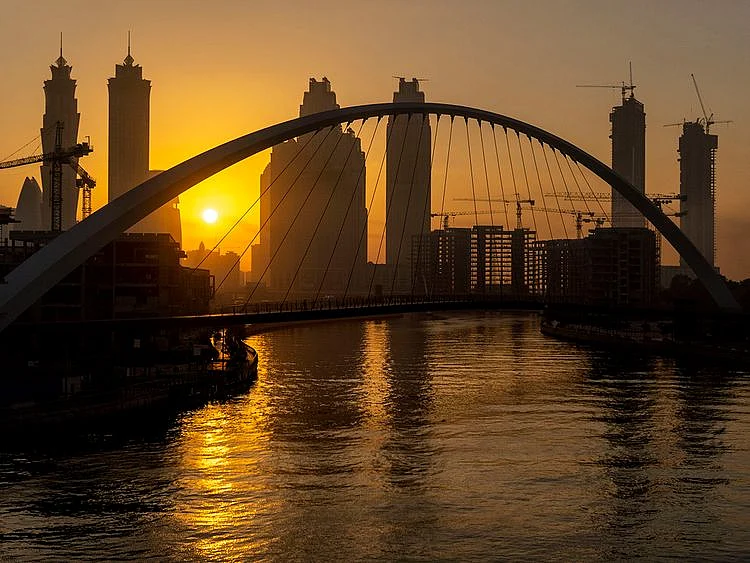Dubai: As the UAE prepares for Eid Al Adha celebrations from June 5 to 8, 2025, residents and visitors can expect sweltering conditions with daytime temperatures reaching around 40°C and high humidity levels making the heat feel even more intense. The four-day holiday weekend will feature approximately 11 hours of bright sunshine each day, with nighttime temperatures offering limited relief at around 26°C. As summer officially begins with the solstice on June 21st, temperatures will continue to soar across the region when the sun reaches its highest point over the Tropic of Cancer at 23.37°N. This astronomical event triggers the year's longest day and marks the onset of intense summer heat, with eastern regions experiencing increased formation of clouds from Indian monsoon depressions especially during afternoons this month.
Temperature trends
June will witness a dramatic 2 to 3°C temperature surge compared to May. Average temperatures climb to a sweltering 33 to 35.7°C, while daytime highs consistently reach 39.8 to 42.7°C. Even nighttime offers little relief, with minimum temperatures hovering between 26.8 to 29.4°C.
According to the National Center of Meteorology (NCM) reports, The region's temperature extremes are remarkable: Al Yasat recorded a blistering 52.0°C maximum in 2010, while Raknah experienced an unusual 14.1°C minimum in 2004, showcasing the area's diverse microclimates.
Atmospheric changes and weather patterns
The dominant Siberian high-pressure system weakens significantly during June, allowing thermal low-pressure systems to influence local weather. Eastern regions experience increased activity from Indian monsoon depressions, creating opportunities for cloud formation over mountainous areas during afternoon hours.
These conditions occasionally produce rainfall, with Owtaid recording the month's highest precipitation of 44.0mm in 2007. Cumuliform clouds frequently develop over eastern mountains, sometimes delivering welcome showers.
Humidity and visibility conditions
Relative humidity decreases notably in June's second half, averaging 43% overall. Daily humidity fluctuations are substantial, ranging from 14 to 27% at minimum to 62 to 87% at maximum levels.
As per the reports from Met office, fog and mist will become increasingly rare as the month progresses. However, in 2021, there were exceptional conditions with 12 foggy days and 6 misty occasions.
Wind patterns
Moderate winds characterise June weather, averaging 13 km/h. However, extreme events can occur, as demonstrated by Jabal Mebreh's record 125.2 km/h gusts in 2010, likely associated with thunderstorm activity.
Planning your June activities
Understanding these climate patterns helps residents and visitors prepare for intense heat, occasional afternoon cloud formation in eastern areas, and generally dry conditions with decreasing humidity as summer intensifies. Residents are advised to take precautions against the heat, including staying hydrated, avoiding strenuous activity during peak sun hours, applying sunscreen, and wearing protective clothing.
Sign up for the Daily Briefing
Get the latest news and updates straight to your inbox
Network Links
GN StoreDownload our app
© Al Nisr Publishing LLC 2025. All rights reserved.

